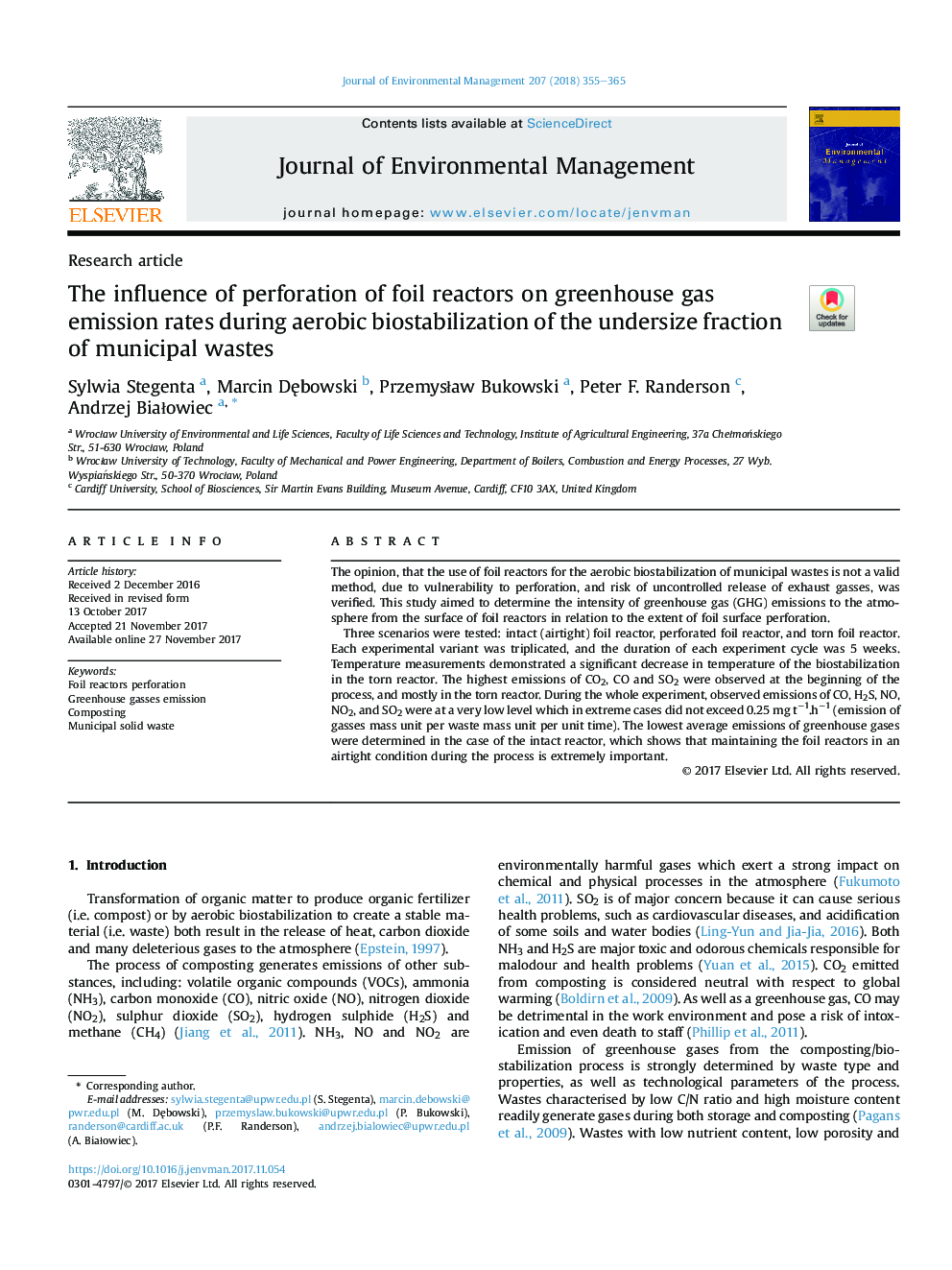| Article ID | Journal | Published Year | Pages | File Type |
|---|---|---|---|---|
| 7478589 | Journal of Environmental Management | 2018 | 11 Pages |
Abstract
Three scenarios were tested: intact (airtight) foil reactor, perforated foil reactor, and torn foil reactor. Each experimental variant was triplicated, and the duration of each experiment cycle was 5 weeks. Temperature measurements demonstrated a significant decrease in temperature of the biostabilization in the torn reactor. The highest emissions of CO2, CO and SO2 were observed at the beginning of the process, and mostly in the torn reactor. During the whole experiment, observed emissions of CO, H2S, NO, NO2, and SO2 were at a very low level which in extreme cases did not exceed 0.25 mg tâ1.hâ1 (emission of gasses mass unit per waste mass unit per unit time). The lowest average emissions of greenhouse gases were determined in the case of the intact reactor, which shows that maintaining the foil reactors in an airtight condition during the process is extremely important.
Keywords
Related Topics
Physical Sciences and Engineering
Energy
Renewable Energy, Sustainability and the Environment
Authors
Sylwia Stegenta, Marcin DÄbowski, PrzemysÅaw Bukowski, Peter F. Randerson, Andrzej BiaÅowiec,
